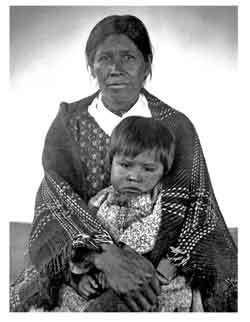Cherokee HistoryThe Eastern Band of the Cherokee Indians has deep ancestral ties to the Southern Appalachian region, including the land now known as Great Smoky Mountains National Park. Their rich history and cultural legacy are preserved and shared at the Museum of the Cherokee People in Cherokee, North Carolina. Historically, Cherokee culture was rooted in hunting, trading, and agriculture. By the time European explorers arrived, the Cherokee inhabited a vast area across what is now the southeastern United States. They lived in small, self-sufficient villages, often located in fertile river valleys. Early homes were made from wooden frames covered with woven vines and mud, later evolving into sturdier log structures. Central to each village was the council house, a sacred seven-sided building symbolizing the seven Cherokee clans: Bird, Paint, Deer, Wolf, Blue, Long Hair, and Wild Potato. Tribal leadership included both a Peace Chief and a War Chief, but decisions were made collectively. Cherokee society valued democratic principles, allowing community voices to guide important choices. 
James Mooney Photograph
Cherokee society was traditionally matrilineal. Children belonged to their mother’s clan, and family lineage was traced through the maternal line. Women held significant power within the tribe and had a strong voice in community decisions. Marriages were only permitted between members of different clans, and property was inherited according to clan relationships. The Cherokee were quick to adopt tools and weapons introduced by Europeans. As trade expanded, hunting shifted from a subsistence activity to one driven by the demand for animal skins and goods. With the growing presence of European settlers, conflict escalated. War and introduced diseases took a heavy toll on the Cherokee population. Over time, the tribe was forced to cede much of its land, first to the British and later to the United States. In the early 1800s, the Cherokee began to reshape their government. They established a democratic system with an elected Chief, Vice Chief, and a 32-member Council. A written constitution and legal code were adopted to guide the new Cherokee Nation. During this period, Sequoyah developed a written form of the Cherokee language. His syllabary included 86 characters, each representing a distinct syllable. This innovation allowed Cherokee speakers to quickly become literate in their own language. Soon after, the Cherokee Council approved the creation of a national newspaper. A printing press was ordered, type was cast in the syllabary, and the Cherokee Phoenix began publication. 
Smokies Life The Cherokee and the Trail of TearsThe Cherokee people once thrived in the southeastern United States, but their peace was short-lived. After gold was discovered on Cherokee lands in Georgia, pressure from President Andrew Jackson and others led to the signing of the Treaty of New Echota—a treaty signed by a small, unauthorized group. Despite widespread opposition from the Cherokee Nation, the treaty was upheld. In 1838, nearly 14,000 Cherokees were forced from their homes and held in stockades before beginning a grueling journey westward to Oklahoma and Arkansas. Over 4,000 died from cold, disease, and hunger on the six-month march known as the Trail of Tears. Before this forced removal, a small group in western North Carolina—later known as the Oconaluftee Cherokees—had received permission to remain. These Cherokees did not live on traditional Cherokee Nation land and were considered a separate group. William H. Thomas, a white man who grew up among the Cherokee and served as their adviser for over 30 years, helped secure their right to stay. To protect their fragile legal status, the Oconaluftee Cherokees were reluctantly involved in capturing Cherokees hiding in the mountains. Among them was Tsali, a man revered for his resistance. He surrendered to protect others and was executed, but his sacrifice led to many hidden Cherokees being allowed to stay. This marked the beginning of the Eastern Band of the Cherokee Indians. Today, around 11,000 members of the Eastern Band live on the Qualla Boundary, a 56,000-acre area spanning parts of five counties in western North Carolina. Communities like Yellowhill, Birdtown, Snowbird, Painttown, Big Cove, and Wolftown make up this vibrant homeland. Unlike many western reservations, the Qualla Boundary is open to visitors. Tourism plays a major role in the economy, with shops, a casino, museums, and cultural attractions preserving Cherokee heritage. Traditional crafts are still taught to the next generation, and the Cherokee language is experiencing a revival. The Sochan GatheringOne enduring tradition is the gathering of Sochan, a wild leafy green that has long been a staple of Cherokee cuisine and medicine. Even during the hardships of the Trail of Tears, Cherokee people paused to harvest Sochan along the journey. This plant, which grows in the Appalachian woodlands, became a symbol of resilience, nourishment, and connection to the land. Today, gathering Sochan is still a cherished cultural practice, linking the past to the present and honoring the strength of Cherokee ancestors.
Recommended Reading

Living Stories Cherokee. |
Last updated: April 8, 2025
